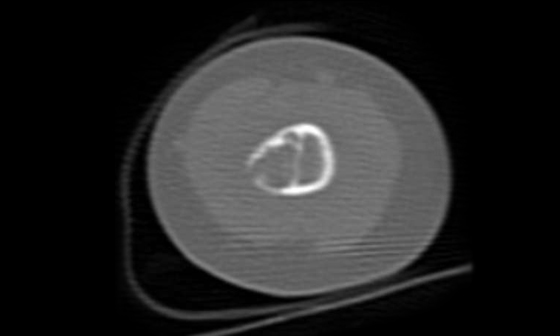October 2014

To book an appointment: Wakad: +917942611128 | Deccan: +917942611126 | Bund Garden: +917942611127 | Akluj: 02185-224444 | Baner: +917942611129

Considering MRI findings-
Irregular area of altered marrow signal intensity in diaphyseal location with cortical break and associated periosteal thickening and adjacent paraosseous soft tissue.
Considering CT findings –
Cortical and diaphyseal location of lesion.
Bowing of shaft of humerus.
Peripheral sclerotic margin.